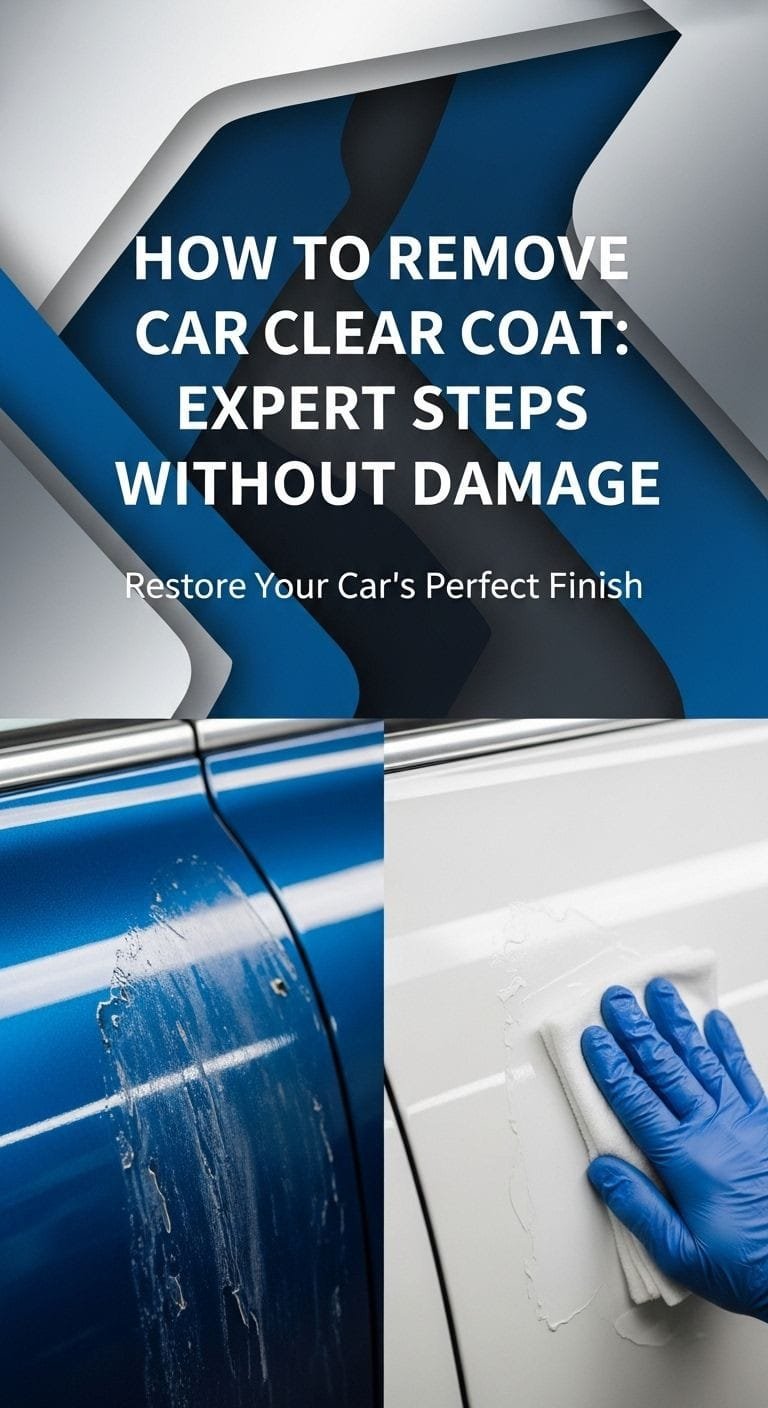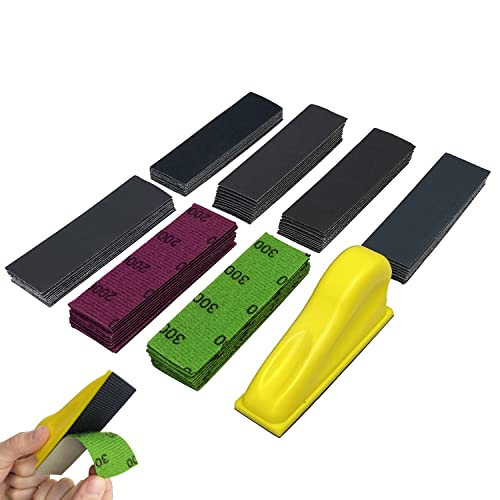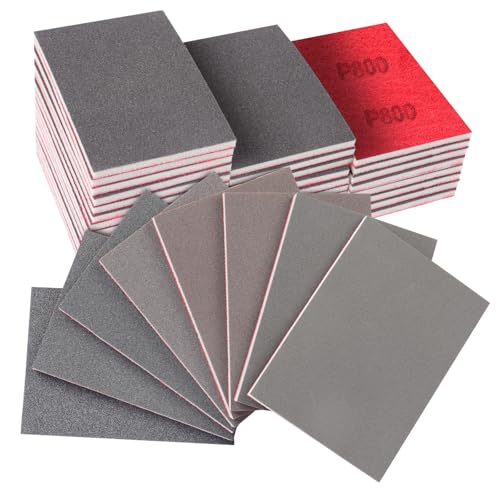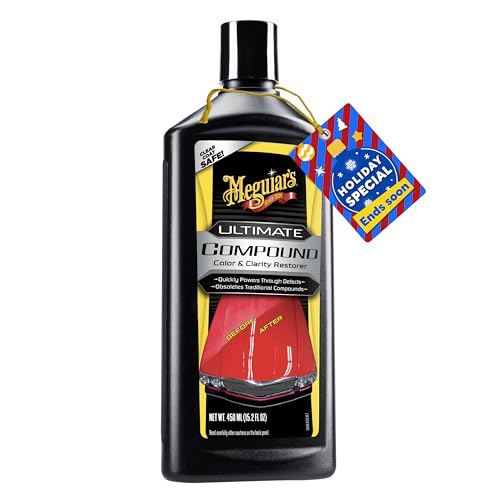Seeing your car’s once-gleaming finish become dull, hazy, or start peeling away is frustrating. You know the problem is the clear coat, but the thought of fixing it brings up more questions: Can you remove it yourself? How do you tackle the job without destroying the color paint underneath? Restoring your car’s shine feels like a complex, high-stakes project, but it doesn’t have to be an impossible one.
To successfully remove a car’s clear coat without damaging the underlying paint, the most effective methods are careful wet sanding with progressively finer grits of sandpaper (from 400 up to 2000) or using a dedicated automotive chemical clear coat remover, always followed by polishing to restore the shine.
Leveraging extensive analysis of established automotive repair methods and documented techniques, this guide unpacks the proven approaches you need. We’ll walk you through everything from identifying when removal is necessary to the detailed, step-by-step processes that professionals use. This guide provides the critical insights and practical steps to help you effectively navigate how to remove clear coat from your car, ensuring you can restore your vehicle’s appearance with confidence.
Why Consider Removing Clear Coat From Your Car?
Car clear coat is removed primarily to fix damage like peeling, flaking, or severe hazing that compromises the paint’s appearance and protective layer. Addressing this prevents further deterioration, restores the vehicle’s aesthetic, and preps the surface for new clear coat application. The clear coat is your vehicle’s first line of defense; it’s a transparent layer of paint designed to protect the colored base coat from minor scratches, UV radiation, corrosion, and other environmental elements. When this protective layer fails, the underlying paint becomes vulnerable. Ignoring significant clear coat damage isn’t just an aesthetic issue—it’s a path to more severe and costly paint problems down the road, including rust.

What Does Damaged Clear Coat Look Like?
Identifying a failing clear coat is the first step. While a new car has a deep, uniform gloss, a damaged one will show distinct signs of wear. You should be on the lookout for several key visual cues that indicate the clear coat is compromised.
- Peeling or Flaking: This is the most obvious sign. You’ll see the clear layer physically lifting away from the color coat, often starting at the edges and creating a patchy, unsightly appearance. It can look like the car’s skin is shedding.
- Hazing or Cloudiness: The finish appears dull, milky, or foggy in certain areas, particularly on horizontal surfaces like the hood, roof, and trunk that get the most sun exposure. This is a form of oxidation where the clear coat breaks down and loses its transparency.
- Cracking: Small, spiderweb-like cracks can appear on the surface. This indicates the clear coat has become brittle and is failing structurally.
- Dullness and Fading: If the car’s paint looks lifeless and no amount of washing or waxing brings back the shine, the clear coat has likely degraded to the point where it can no longer provide that deep, glossy finish.
When Is Clear Coat Removal Necessary vs. Repair?
Deciding whether to perform a full removal or attempt a simpler repair depends entirely on the severity and extent of the damage. Making the right choice can save you significant time and effort.
Minor Damage (Repairable):
* Light Scratches: Scratches that haven’t penetrated through the clear coat.
* Minor Oxidation: A light, hazy appearance that hasn’t started to peel or crack.
* Small Scuffs: Localized surface blemishes.Solution: For these issues, you can often restore the finish without full removal. The process typically involves using a polishing compound or, for slightly deeper scratches, light wet sanding with very fine-grit sandpaper (e.g., 2000-3000 grit) followed by compounding and polishing. This essentially smooths out the top layer of the existing clear coat to remove the imperfection.
Extensive Damage (Requires Removal):
* Widespread Peeling and Flaking: If large sections of clear coat are lifting off.
* Deep Cracking: When the clear coat is cracked throughout a panel.
* Severe Oxidation: When the finish is extremely dull and cloudy across the entire vehicle or large panels.
* Deep Scratches: Scratches that have gone through the clear coat and reached the color coat.Solution: In these cases, a simple repair is not enough. You cannot apply a new clear coat over a failing one; the new layer will not adhere properly and the underlying damage will quickly reappear. The only effective remedy is to completely remove the old, damaged clear coat to create a stable, smooth foundation for a fresh application.
How to Remove Clear Coat From Car Without Damaging Paint?
To safely remove clear coat without damaging paint, employ careful wet sanding with progressively finer grits (e.g., 800-2000) or use a specialized automotive clear coat remover. Precision, patience, and continuous assessment are key to preserving the underlying paint layer. The goal is not to obliterate the surface, but to methodically abrade or dissolve only the top transparent layer, leaving the color coat untouched and ready for refinishing. Both methods require a delicate touch and a systematic approach to avoid costly mistakes.
Essential Tools and Materials for Clear Coat Removal
Gathering the right equipment before you start is crucial for a successful and safe job. Working with the correct tools will not only make the process smoother but also significantly reduce the risk of damaging your car’s paint. Here is a checklist of what you’ll need:
- Washing Supplies: Car wash soap, a soft sponge (like a microfiber sponge), and a hose for a thorough initial cleaning.
- Sandpaper (Assorted Grits): You will need a range for wet sanding. A typical progression includes:
- 400-800 grit for initial removal
- 1000-1200 grit for smoothing
- 1500-2000 grit for final refinement before polishing
- Sanding Block: A rubber or foam block helps apply even pressure while sanding, preventing finger marks and uneven spots.
- Spray Bottle: To keep the surface constantly lubricated with water during wet sanding.
- Chemical Clear Coat Remover: If you choose the chemical method, ensure it’s a product specifically designed for automotive use that is safe for underlying paint.
- Electric Polisher/Buffer: While manual polishing is possible, an electric polisher is essential for achieving a professional, even finish, especially on larger panels.
- Pads for Polisher:
- 100% Wool Buffing Pad: For use with aggressive cutting compounds.
- Foam Polishing Pads (Cutting, Polishing, Finishing): A set of pads for each stage of the polishing process.
- Compounds and Polishes:
- Cutting/Buffing Compound: An aggressive compound (like Griots Fast Correcting Cream) to remove sanding marks.
- Finishing Polish: A finer polish to restore gloss and clarity.
- Microfiber Towels: Plenty of clean, soft towels for wiping away residue and drying the vehicle.
- Painter’s Tape: To mask off and protect adjacent panels, trim, lights, and any delicate parts.
- Safety Gear (Crucial):
- Safety Glasses: To protect your eyes from splashes and debris.
- Gloves: To protect your hands from chemicals and abrasion.
- Respirator: Essential when sanding (to avoid inhaling dust) or using chemical removers (to avoid inhaling fumes).

Method 1: Safe Wet Sanding Techniques
Wet sanding is the most common and controlled method for removing clear coat. The water acts as a lubricant, preventing the sandpaper from getting clogged with material and, most importantly, carrying away debris to prevent it from causing deep, random scratches. This technique requires patience.
Step 1: Thoroughly Wash and Prep the Area
Before any sanding begins, you must work on a perfectly clean surface. Wash the entire vehicle, or at least the panel you’re working on, with car soap and water. This removes loose dirt, dust, and grime that could get caught in the sandpaper and scratch the paint. Rinse thoroughly and dry the area completely with a microfiber towel. Use painter’s tape to mask off any adjacent panels, trim, or emblems you want to protect.
Step 2: Begin Wet Sanding with a Coarse Grit (400-800 Grit)
Soak your coarsest sandpaper (e.g., 400 or 600 grit) in a bucket of water. Wrap it around a sanding block for even pressure. Liberally spray the panel with water from your spray bottle. Begin sanding the clear coat with light, consistent pressure in one direction (e.g., horizontally). Keep the area wet at all times. You will see a milky, white slurry in the water; this is the clear coat you are removing. Continue until the damaged clear coat is mostly gone and the surface feels uniformly smooth.
Step 3: Progress to Finer Grits (1000-2000 Grit)
After wiping the surface clean, switch to a finer grit sandpaper (e.g., 1000 or 1200 grit). This time, sand in the opposite direction (e.g., vertically). This cross-hatch pattern makes it easier to see when you have removed the scratches from the previous, coarser grit. Continue this process, moving to progressively finer grits like 1500 and then 2000. Each step refines the surface, removing the scratches from the prior step and leaving a smoother, albeit dull, finish.
Step 4: Rinse, Dry, and Inspect
Thoroughly rinse the panel to remove all sanding residue. Dry it with a clean microfiber cloth. Inspect the surface carefully. It should look dull and hazy but be perfectly smooth to the touch, with no remaining signs of peeling or flaking.
Method 2: Using Chemical Clear Coat Removers Safely
For some, chemical removers offer a faster alternative to sanding, though they require extreme care. Always choose a product specifically labeled as a “clear coat remover” for automotive finishes.
Step 1: Work in a Well-Ventilated Area with PPE
Chemical fumes are hazardous. Perform this work outdoors or in a very well-ventilated garage. Wear your respirator, safety glasses, and chemical-resistant gloves.
Step 2: Apply the Remover
Follow the manufacturer’s instructions precisely. Typically, you will apply the chemical remover evenly over the surface with a brush or as a spray. Do not allow it to drip onto other parts of the car.
Step 3: Allow the Chemical to Dwell
The product needs time to work—this is called “dwell time.” It will soften and bubble the clear coat. The required time will be specified in the product instructions. Do not let it dry on the surface.
Step 4: Scrape and Wipe Away the Clear Coat
Once the clear coat has bubbled up, use a plastic scraper or putty knife to gently lift the softened layer off the paint. Be extremely careful not to gouge the underlying color coat. Wipe the residue away with clean cloths. You may need to reapply the chemical in stubborn spots.
Step 5: Neutralize and Clean the Surface
After all the clear coat is removed, you must neutralize any remaining chemicals. The product instructions will specify the correct procedure, which often involves washing the area with soap and water or a specific neutralizing agent. Rinse thoroughly and dry the panel.
Addressing Specific Damage: Peeling and Flaking Clear Coat
When dealing with large, peeling sections, you can modify your approach to speed things up.
- Remove Loose Flakes: You can often use a power washer (held at a safe distance) or a plastic razor blade to carefully peel off the large, loose flakes of clear coat before you begin sanding. This removes the bulk of the compromised material quickly.
- Feather the Edges: The most important part of repairing a peeling area is to “feather” the edges. When you begin sanding, focus on the border where the intact clear coat meets the exposed base coat. You want to create a very smooth, gradual transition so that the repair is invisible after repainting.
- Heat Gun (With Extreme Caution): A heat gun can be used to soften the clear coat, causing it to bubble slightly and making it easier to scrape off with a putty knife. However, this is a high-risk technique. Too much heat can burn the paint or even deform plastic body panels. Use low heat and keep the gun moving constantly.

Post-Removal Steps: Preparing for Reapplication or Polishing
Whether you sanded or used chemicals, the surface will be left dull and hazy. The final steps are what bring back the shine and prepare the car for its new finish.
- Degrease the Surface: Wipe the entire panel down with a wax and grease remover or isopropyl alcohol on a clean microfiber towel. This removes any oils, fingerprints, or residues that could interfere with polishing or new paint adhesion.
- Use a Tack Cloth: Just before polishing or painting, wipe the surface with a tack cloth to pick up any final dust particles.
- Compounding and Polishing: This is a two-stage process to remove the sanding marks.
- Compounding: Apply a cutting compound to a wool or aggressive foam pad on your electric polisher. Work in small 2×2 foot sections at a low speed (around 1200-1400 RPM), moving the polisher in overlapping passes to remove the haze and fine scratches left by the sandpaper.
- Polishing: Switch to a softer foam pad and a finishing polish. Increase the polisher speed slightly. This will remove any light swirls left by the compound and restore a deep, wet-looking gloss to the paint.
- Final Protection: After polishing, the surface is ready. You can either proceed with applying a new clear coat according to its manufacturer’s instructions or, if you are not reapplying clear coat, protect the newly polished paint with a high-quality car wax or ceramic sealant.
Are There Any Quick Fixes or “Magic” Solutions for Clear Coat?
While some suggest household items like WD-40 or rubbing alcohol for car clear coat issues, these are generally ineffective for complete removal and can potentially harm the underlying paint. Professional or dedicated automotive clear coat removal methods are recommended for proper results. In the world of car care, many myths circulate about quick and easy fixes. When it comes to something as durable as automotive clear coat, these “magic” solutions often do more harm than good or simply don’t work at all.
Does WD-40 Remove Clear Coat?
No, WD-40 does not remove clear coat. WD-40 is a water-displacing lubricant and a mild solvent, designed to penetrate rust and loosen stuck parts. It is not formulated to dissolve cured automotive paint. While it might temporarily make a dull surface look shiny by filling in microscopic pores (similar to a wax), it does not fix or remove the underlying damage. Once it evaporates or is washed off, the clear coat will look exactly as it did before. Using it can also leave an oily residue that will need to be thoroughly cleaned before any proper repair work can be done.
Will Rubbing Alcohol Remove Clear Coat?
Generally, no. Rubbing alcohol (isopropyl alcohol) is a solvent that is effective at removing waxes, sealants, and oils from a car’s surface. This is why it’s often used as a final prep step before applying a new protective coating. However, it is not strong enough to dissolve a fully cured, factory-applied clear coat. While prolonged exposure or highly concentrated alcohol could potentially dull or soften some less durable aftermarket clear coats, it will not act as a practical or effective stripper for OEM finishes.
Can a Heat Gun or Razor Blade Be Used?
Yes, but with extreme caution, as these are aggressive, high-risk methods.
- Heat Gun: A heat gun can soften the clear coat, causing it to bubble and lift, making it easier to scrape off. However, the line between “softening” and “burning” is very thin. Applying too much heat can permanently damage the underlying color coat and even warp plastic bumpers or panels. This technique requires a great deal of control and experience.
- Razor Blade: A razor blade can be used to carefully scrape away peeling or flaking clear coat. This is sometimes done to remove the bulk of the damage before sanding. The risk of slipping and gouging a deep scratch into the color coat or even the metal panel is incredibly high. This should only be attempted by those with a very steady hand and a deep understanding of the risks involved.
To get started with the wet sanding method, having a complete set of the necessary supplies makes the job much easier.
FAQs About How to Remove Clear Coat From Car:
How do you remove clear coat from a car without damaging paint?
The safest way is methodical wet sanding. Start with a medium grit (like 800) and progress to finer grits (1500, 2000), always keeping the surface wet. This gently abrades the clear coat layer by layer. Alternatively, an automotive-specific chemical clear coat remover can be used, but you must follow the product’s instructions precisely to avoid damaging the underlying paint.
Does WD-40 remove clear coat?
No, WD-40 will not remove cured automotive clear coat. It is a lubricant and water displacer, not a paint solvent. It might make a dull spot look temporarily shiny by filling in pores, but it does not repair or remove the damaged layer. Any perceived effect is temporary and superficial.
Will rubbing alcohol remove clear coat?
It is highly unlikely. Rubbing (isopropyl) alcohol is not a strong enough solvent to break down a durable, factory-applied clear coat. It is effective at removing waxes, oils, and some contaminants from the surface, but it will not act as a paint or clear coat stripper.
How to remove clear coat spray from car?
If you are dealing with overspray from a spray can, the approach depends on how fresh it is. If it’s fresh and tacky, an automotive solvent might work. If it’s cured, a clay bar treatment is the safest first step. For stubborn overspray, you may need to resort to light wet sanding with a very fine grit (2000+) and then polishing the area.
What is the best clear coat remover for cars?
The “best” remover is one that is specifically formulated for automotive use and states it is safe for underlying paint. There isn’t one single best brand, but sanding is often preferred for its control. If using a chemical, choose a reputable automotive paint supply brand and test it on a small, inconspicuous area first.
Can you remove clear coat without sanding?
Yes, you can remove clear coat without sanding by using a chemical clear coat stripper. This method involves applying the chemical, letting it dwell to soften the clear coat, and then gently scraping it off. This can be faster but carries a higher risk if not done carefully and requires excellent ventilation and safety gear.
How do I make peeling clear coat look better temporarily?
For a very temporary cosmetic improvement, you can apply a high-quality car wax or a spray detailer. This will fill in some of the roughness and add a bit of shine, making the peeling less noticeable from a distance. However, this is purely a temporary illusion and will not stop the peeling from getting worse.
Is removing clear coat a difficult DIY task?
It is an advanced DIY task that requires significant patience, precision, and physical effort. The risk of sanding through the color coat is real for beginners. If you are not comfortable with multi-step processes or lack the proper tools, consulting a professional is often the safer and more cost-effective choice.
How long does it take to remove clear coat from a car?
The time varies greatly depending on the size of the area and the method used. A single panel, like a hood or roof, could take several hours of sanding and polishing. Removing the clear coat from an entire car is a multi-day project, likely taking a full weekend or more for an experienced DIYer.
What are the signs of a failing clear coat?
The most common signs are peeling, where the clear layer flakes off like sunburn; hazing or a cloudy, milky appearance; fine cracks resembling a spiderweb; and a general dullness or faded look that cannot be restored by washing or waxing. These issues are most common on sun-exposed surfaces like the hood and roof.
Summary
Successfully removing a damaged clear coat is the key to restoring your car’s visual appeal and protecting its valuable paint job. The most reliable methods—meticulous wet sanding and careful chemical application—demand a systematic approach. The process is not about speed, but about precision. From the initial wash to the final polish, every step, including using the right sandpaper grits, maintaining constant lubrication, and applying even pressure, is critical to preventing damage to the underlying color coat.
While quick fixes like WD-40 are ineffective myths, the proven techniques outlined in this guide provide a clear path to achieving a professional-quality foundation for a new, brilliant finish. With the right tools, a healthy dose of patience, and a commitment to the process, you are now equipped to tackle clear coat failure and bring back the deep, lasting shine your vehicle deserves.
Last update on 2026-01-02 / Affiliate links / Images from Amazon Product Advertising API













